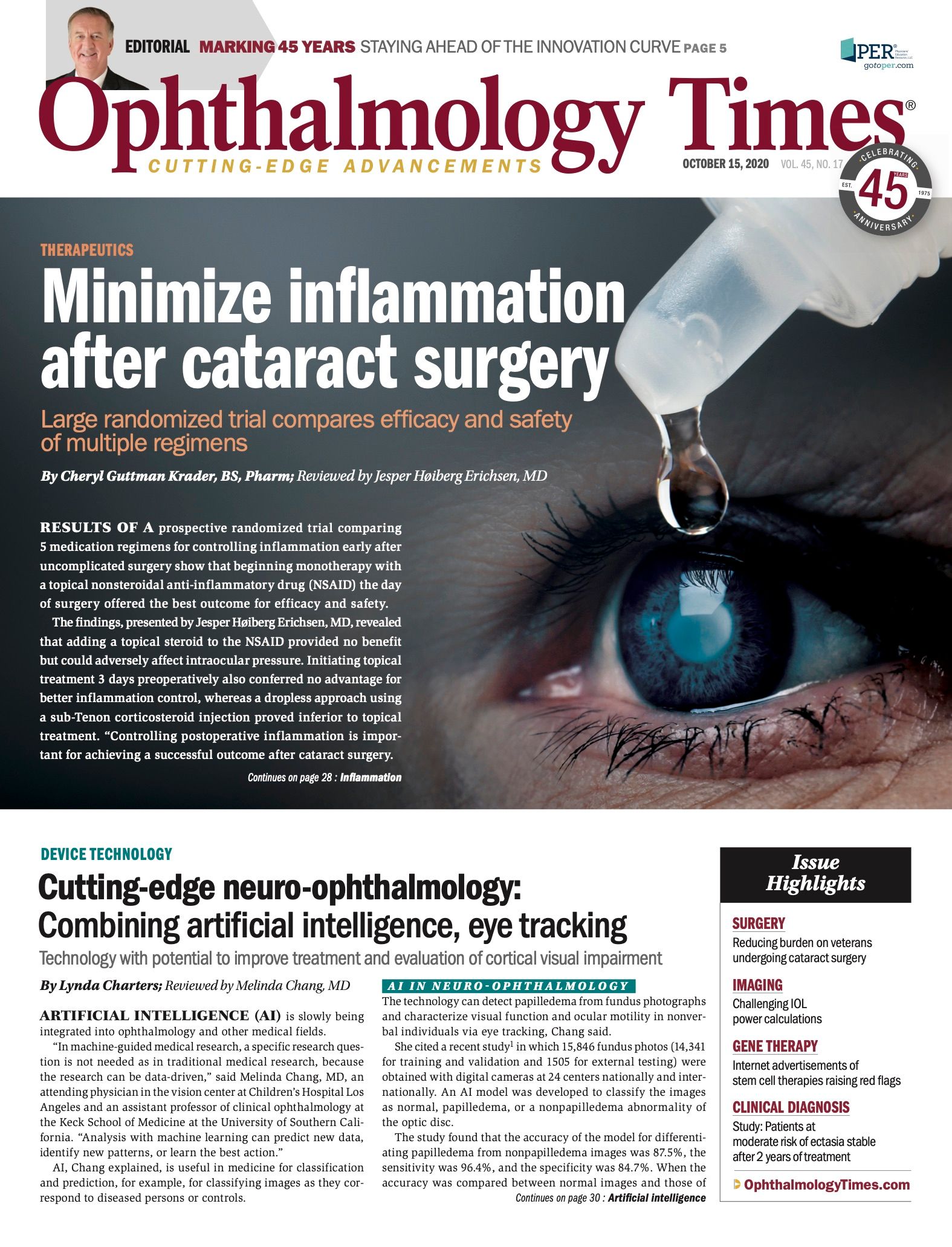Publication
Article
Digital Edition
Exploring four decades of change in retina
Author(s):
Advances in treatment and surgical techniques have transformed patient care.

Special to Ophthalmology Times®
Forty-five years have brought major changes to the field of retina. In 1975, retina fellowship training had existed for only about 26 years and there was only one subspecialty society, The Retina Society.
At that time, much of science and medicine was based on observation and training focused on surgical areas.
Over the ensuing four decades, there have been major advances in our understanding in science, technology, optics and medicine, as well as in surgery, which have tremendously changed the ways we diagnose and treat patients with retinal diseases.
Related: Retinal implant improves quality of life in patients with RP
At that time, much of science and medicine was based on observation and training focused on surgical areas.
Over the ensuing four decades, there have been major advances in our understanding in science, technology, optics and medicine, as well as in surgery, which have tremendously changed the ways we diagnose and treat patients with retinal diseases.
With an increased understanding of diseases and new treatments, areas of study within retina have grown and are now recognized as subspecialties in their own right, for example, pediatric retina, uveitis, and inherited retinal diseases.
When considered among other medical or surgical specialties, ophthalmology/retina has accomplished firsts: development of optical coherence tomography, human gene therapy to treat an inherited disease, first FDA-approved method to use artificial intelligence to characterize retinal disease, as a few examples.
The evolution of genetics and molecular biology have led to recognition of gene associations with human diseases and the ability to study gene variants, as well as the signaling pathways involved, in the pathophysiology of a given disease.
Tools including genetic knockout, inducible conditional and transgenic models have enabled scientists, clinicians, and clinician scientists to pursue study of molecules in specific cell types and how these influence human disease.
Related: Harnessing regeneration of retinal tissues: An option almost within reach
Experimental methods led to the development of treatments: anti-angiogenic agents in retinovascular and choroidal neovascular diseases, immunosuppressive agents in uveitis, and gene therapy to treat some inherited retinal diseases as well as to understand complex pathophysiology of chronic diseases that potentially leads to future treatments.
Now, blindness from a form of retinitis pigmentosa can be treated by replacing a mutant RPE65 allele with gene therapy.
Clinical trials have evolved to test hypotheses developed from experimental studies, and then following interpretation of outcomes, to present new hypotheses to be studied experimentally (bench to bedside to bench model).
The development of optical coherence tomography has bridged pathology, once appreciated only after removal of an eye, to real-time by associating retinal pathology with visual acuity and human symptoms over time and following intervention.
Advances in biomedical engineering have led to methods to restore vision through computer chips and to test cell and biomedical interfaces for future treatments.
Related: AAO live: Autologous retinal transplant for larger macular holes gaining traction
It is impossible to list all the advances, but I will highlight a few. Diabetic retinopathy has evolved from preventing blindness to potentially reversing severity and improving vision.
In 1981, success was reduction in 2-year incidence of blindness by 60% with panretinal photocoagulation. Over the next decades, laser maintained vision loss in DME; then, anti-VEGF agents or steroids improved visual acuity and reversed disease severity in some patients.
An FDA-approved camera using artificial intelligence to characterize DR severity is hoped to characterize features of the 60% of patients with DME who do not respond to current treatment.
In age-related macular degeneration (AMD), laser to choroidal neovascularization slowed progression to legal blindness, with success as maintaining visual acuity. Currently, anti-VEGF agents can improve vision in patients with neovascular AMD.
Clinical studies are identifying the burden of vision loss in atrophic AMD and clinical trials are testing new therapies for it.
Increasing recognition that surgical management of pediatric retinal diseases differs from other fields of ophthalmology has led to improved outcomes.
In ROP, classification of early disease in the 1980s allowed testing of a destructive treatment of the peripheral avascular retina to reduce the hypoxic drive of abnormal angiogenesis first with cryotherapy and then laser.
Related: Probe of IRIS registry: Anti-VEGF injections key treatment for PDR
Now, from experimental studies, anti-VEGF agents are used to regulate the VEGF signaling pathway and regress intravitreal growth of blood vessels and, for the first time, facilitate vascularization of the peripheral avascular retina.
New studies are evolving to safely regulate angiogenesis in these fragile, developing premature infants so as not to adversely affect other organs, including the brain.
Surgical improvements include the development of small gauge vitrectomy and imaging. Microscopic surgery required flat contact lenses that afforded only a limited view of the posterior retina.
Now wide-angle viewing systems permit a larger field of view; heads-up displays magnify images with stereopsis and better ergonomics for the surgeon; and intraoperative OCT allows visualization of vitreoretinal and subretinal layers, critical for surgery and gene therapy.
Therapies have evolved not only to be globe salvaging in certain tumors, but to preserve vision through chemotherapy, and increase understanding of molecular mechanisms involved to improve diagnostic prediction of tumor severity and recurrence.
When we look back at where we were, we realize that it has been a productive and amazing 45 years! The changes we see now seem to be increasing exponentially each decade. It is hard to predict what the future will hold from where we are now.
Read more retina content
About the author
Mary Elizabeth Hartnett, MD, FACS, FARVO
e: ME.Hartnett@hsc.utah.edu
Hartnett is a professor of ophthalmology at the John A. Moran Eye Center at the University of Utah in Salt Lake City.

Newsletter
Don’t miss out—get Ophthalmology Times updates on the latest clinical advancements and expert interviews, straight to your inbox.





